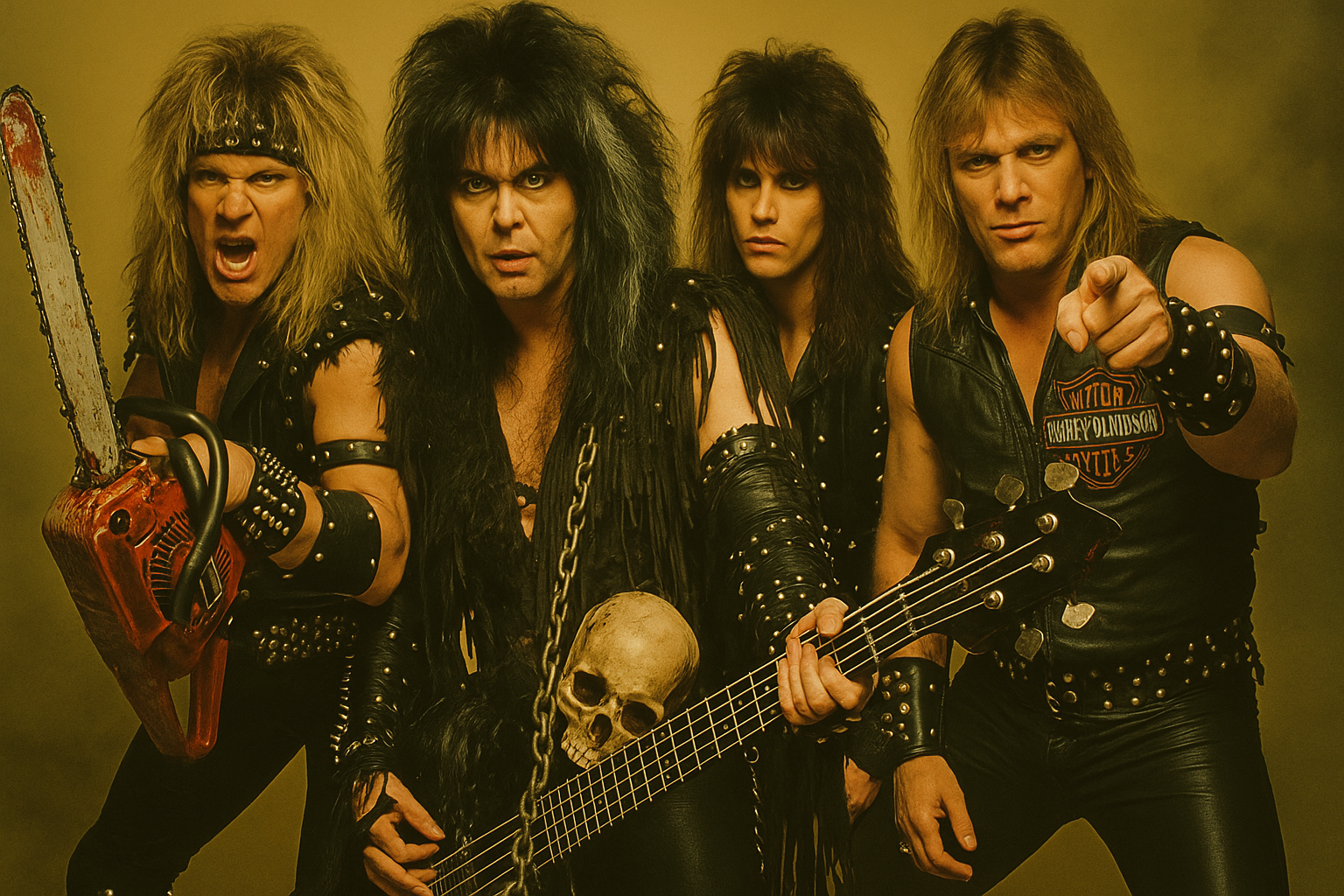W.A.S.P., Shock Rock, and the 1980s Battle Over Censorship
When rock fans picked up the March 31, 1986 issue of Circus Magazine, they weren’t just flipping through another music publication. They were stepping into the frontlines of a cultural war. Buried between features on AC/DC, Mötley Crüe, and Bon Jovi was a searing exposé: “W.A.S.P. carry controversy to the next stage.” Written by Moira McCormick, the article spotlighted one of the most polarizing bands of the decade—W.A.S.P.—and their relentless pursuit of shock, spectacle, and rebellion.
For readers in the mid-1980s, this wasn’t just entertainment news. It was a reflection of a larger battle raging across America: the fight over music censorship, morality in media, and the freedom of artistic expression.
The mid-1980s marked a turning point in American popular culture. Heavy metal and glam rock were rising to mainstream dominance, fueled by the power of MTV, arena tours, and magazines like Circus, which brought fans closer to their idols than ever before.
At the same time, however, the Parents Music Resource Center (PMRC) was waging a highly public campaign against what it saw as dangerous content in music. Founded by Tipper Gore, the PMRC pushed for warning labels on records with “offensive” lyrics.
W.A.S.P. became a lightning rod because of tracks like “Animal (F* Like a Beast)”**, their outrageous stage theatrics, and the blood-soaked, skull-and-chainsaw imagery they carried on tour. By 1986, they weren’t just a band—they were a case study in the culture clash between conservative America and the freedom of rock ‘n’ roll.
Circus had long been one of the essential reads for rock fans, known for its mix of celebrity profiles, tour coverage, gear talk, and photo spreads. What made this issue stand out was how it leaned into the controversy surrounding W.A.S.P. instead of shying away from it.
The feature painted W.A.S.P. as both provocateurs and survivors, willing to stare down angry parents, politicians, and even police bans in cities like San Antonio.
-
Blackie Lawless was quoted saying: “If you don’t want to hear the song, don’t buy a ticket.”
-
The article described outrageous live shows where Randy Piper revved up a chainsaw guitar, Chris Holmes strutted in biker gear, and Lawless wielded his infamous skull-and-blood stage props.
-
W.A.S.P. was portrayed not as reckless amateurs, but as deliberate showmen who understood the value of controversy.
For readers in 1986, Circus provided something television and newspapers often didn’t: a sympathetic platform that understood the appeal of the outrageous.
The visual style of Circus in this issue perfectly captured W.A.S.P.’s aura of danger and rebellion:
-
Full-color band shot on a yellow backdrop: Blackie Lawless and the band dressed in leather, feathers, studs, and chains, glaring at the camera with theatrical menace.
-
Chris Holmes in Harley-Davidson gear, pointing at the reader—a direct invitation to chaos.
-
Action shots of Randy Piper’s chainsaw stunt and Blackie with his skull guitar, drenched in stage lighting.
Unlike mainstream press outlets, which often mocked metal bands, Circus celebrated the shock factor, presenting it as part of the fun of fandom.
The significance of this feature extended beyond just one band. It tapped into broader trends in the 1980s:
-
The Rise of Shock Rock – W.A.S.P. carried forward traditions set by Alice Cooper and KISS, pushing them into even bloodier and raunchier territory.
-
The MTV Generation – With music videos as a central marketing tool, image mattered more than ever.
-
Censorship vs. Freedom – The PMRC hearings in 1985 (where Dee Snider of Twisted Sister testified before Congress) had set the stage.
-
Global Reach of Metal – W.A.S.P. toured internationally, including in the Soviet Union, where Western music was still heavily restricted.
Why is the March 31, 1986 issue of Circus so collectible?
-
Timing: Published at the peak of the PMRC debates, it’s a historical artifact from the censorship wars.
-
Iconic Feature: The W.A.S.P. article captured the band’s most notorious period, with quotes from Blackie Lawless and Chris Holmes.
-
Photography: The vivid images of chainsaws, skulls, and leather outfits are quintessential glam metal visuals.
-
Cultural Value: Owning this issue is like holding a piece of the 1980s culture war in your hands.
Collectors and music historians often seek out magazines like this not only for nostalgia but also for the primary-source insight they provide into the era’s controversies and fan culture.
Magazines like Circus didn’t just report on rock—they shaped how fans saw it. They made larger-than-life figures like Blackie Lawless feel like rebellious heroes, turning PMRC outrage into proof that fans were part of something dangerous, cool, and forbidden.
Where newspapers saw filth and decline, Circus saw artistry, showmanship, and thrill. For millions of teens, it wasn’t just a magazine—it was a lifeline to the music that defined their generation.
If you’re interested in reliving the glory days of glam metal and the censorship wars of the 1980s, vintage Circus magazines are invaluable. They capture not only the voices of bands like W.A.S.P., Mötley Crüe, and AC/DC, but also the pulse of a youth culture that refused to be silenced.
👉 Browse our full collection of original Circus Magazines here:
Original Circus Magazines Collection
Each issue is more than just glossy paper—it’s a piece of history. Whether you’re a collector, music historian, or just someone who remembers blasting metal cassettes in your bedroom, these magazines take you straight back to the frontline of rock rebellion.
The March 31, 1986 issue of Circus Magazine remains one of the defining publications of the decade. Its feature on W.A.S.P. crystallized the cultural clash between shock rock and censorship, freedom and regulation, rebellion and respectability.
Holding this magazine today means holding a snapshot of an era when music could ignite national debates, terrify parents, and inspire fans all at once.
And in the words of Blackie Lawless himself: “Rock & roll is about rebellion—and controversy sells.”

